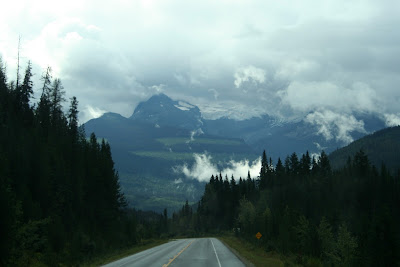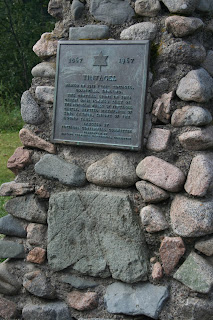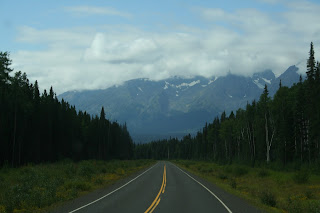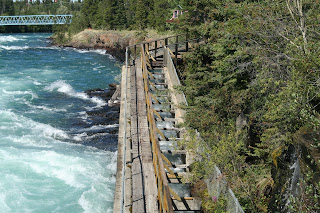Plan A was to head to Jasper, Lake Louise and Banff. That was a bust since the Provincial Park Campgrounds were full. Plan B was almost a bust. Campgrounds up and down the Okanagan Valley were booked. We finally found a wonderful campground in Oliver, BC (only 14 miles to the U.S. Border) and were even happier about the number of vineyards nearby.
The final leg down Hwy 97 to Okanagan provided us with more spectacular views on our way back to the good ol' USA...
Okanagan Lake stretches almost 60 miles with vineyards, beaches, restaurants, and B&B's up and down the coastline.
The Okanagan Valley has Canada's largest and oldest vineyards. It is part of the Sonoran Desert (stretching from Mexico) with about 12 inches of precipitation yearly, hot summers and mild winters which makes it a perfect climate for grapes.
Hester Creek Vineyards and some great wines was first on the list.

Almost every vineyard has beautiful gardens and decorations.
We visited Sumac Ridge Vineyard about 12 years ago and picked up a case of their un-oaked Chardonnay. Still as good as we remembered.
I could fill the page with photos of the wineries that we visited, but onto other things.
Okanagan Lake narrows into a canal about half way down the lake. Residents and visitors take advantage of the crystal clear waters and warm weather by floating between the lakes. In the summer there is a competition where people "decorate" their floats. Fun.

Our Sami is now enjoying the peace and quiet and the luxury of grass outside her door. The driving has been difficult for her at times... I keep promising her we are going to be home soon.
A rainy Friday and the only thing to do is visit wineries - we figured someone has to do it. Our last day in the Okanagan Valley and we found one winery that kind of stuck out from the rest and we voted it the best of all.
Old covered wagon at the entrance to Rustico Farms & Cellars
Figured this was the owner's mode of transportation - looks like an old lawn mower engine on his motorized horse tied up to the rail.
His home was a thatched roof log cabin and his laundry was out to dry - hard to do on a rainy day.
The entrance to the tasting room - inside was like an old saloon.
The owner (Bruce) looked like he walked out of an old western movie and has the personality of an old saloon bartender. Wine was poured into shot glasses for the tasting. We voted their wines probably the best of the vineyards we visited this trip. A couple cases of wine later and the last picture together of our journey... in the morning starts the trip home.
Our trip has been a wonderful adventure and a great experience especially with magnificent friends. In the next several days, we enter the U.S. and head back home to fix a few odd and ends on the coach and finish some remodeling on the house.
This is the end of this chapter of our blog - until the road less traveled calls again.
"Wine is constant proof that God loves us and loves to see us happy."
Ben Franklin
















































